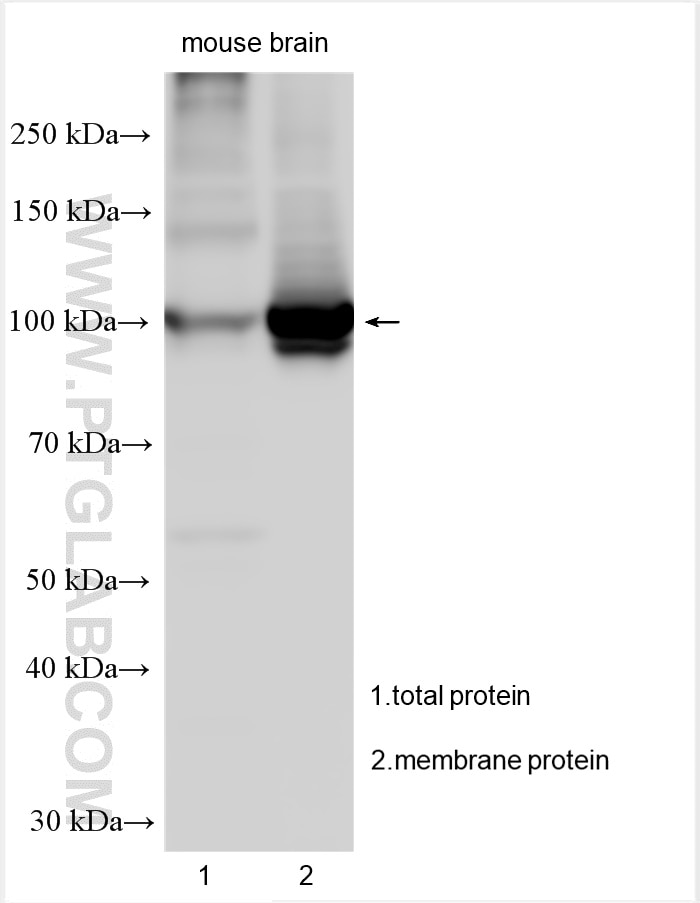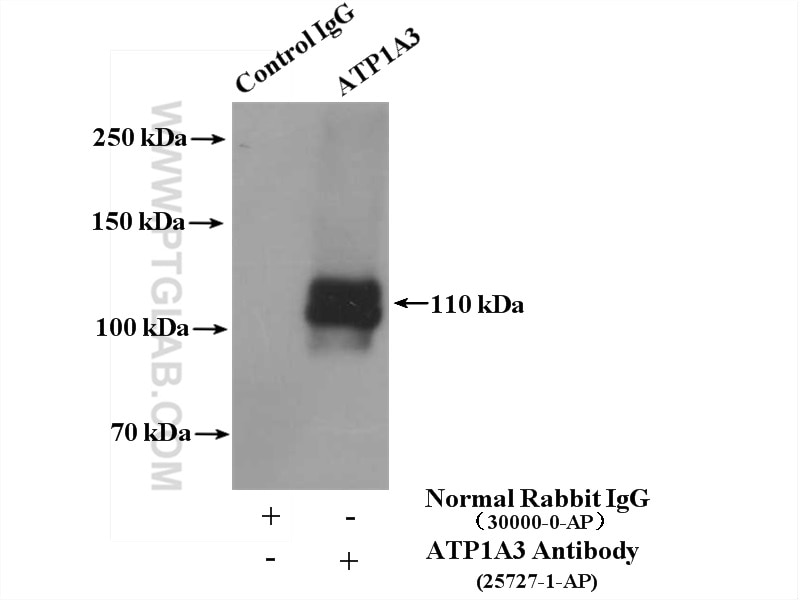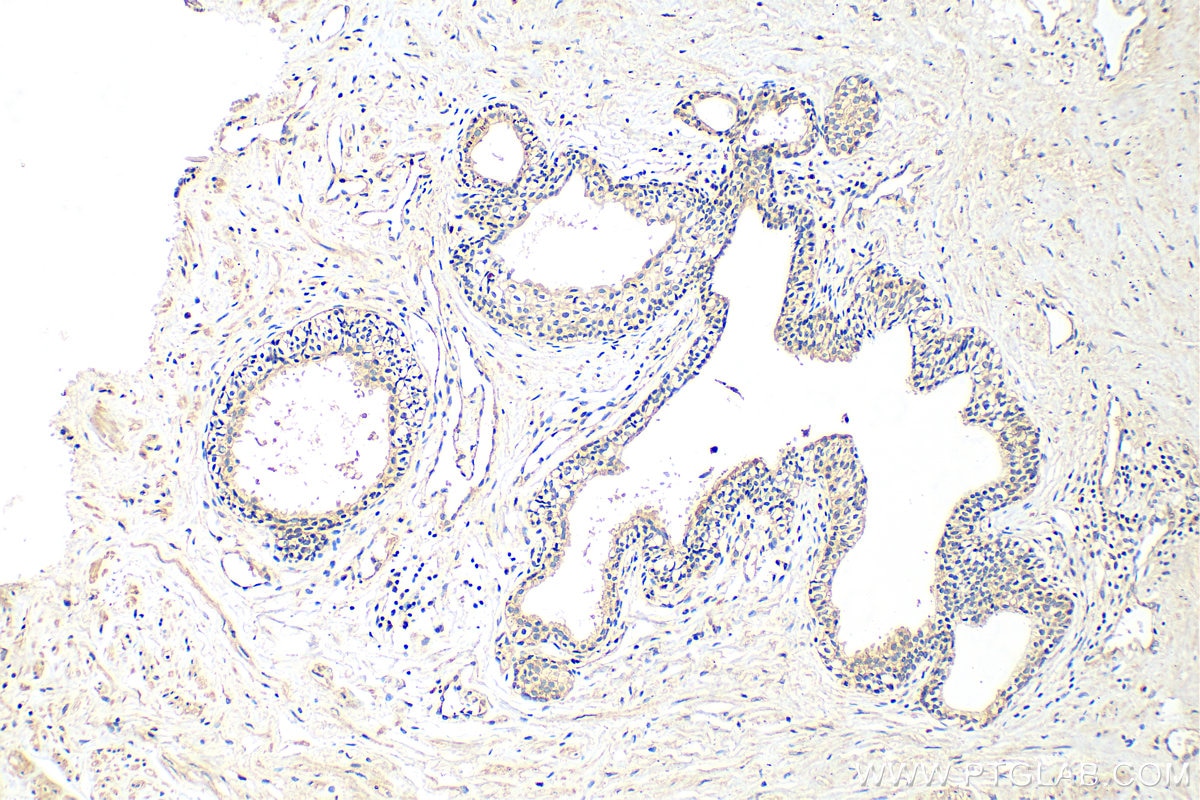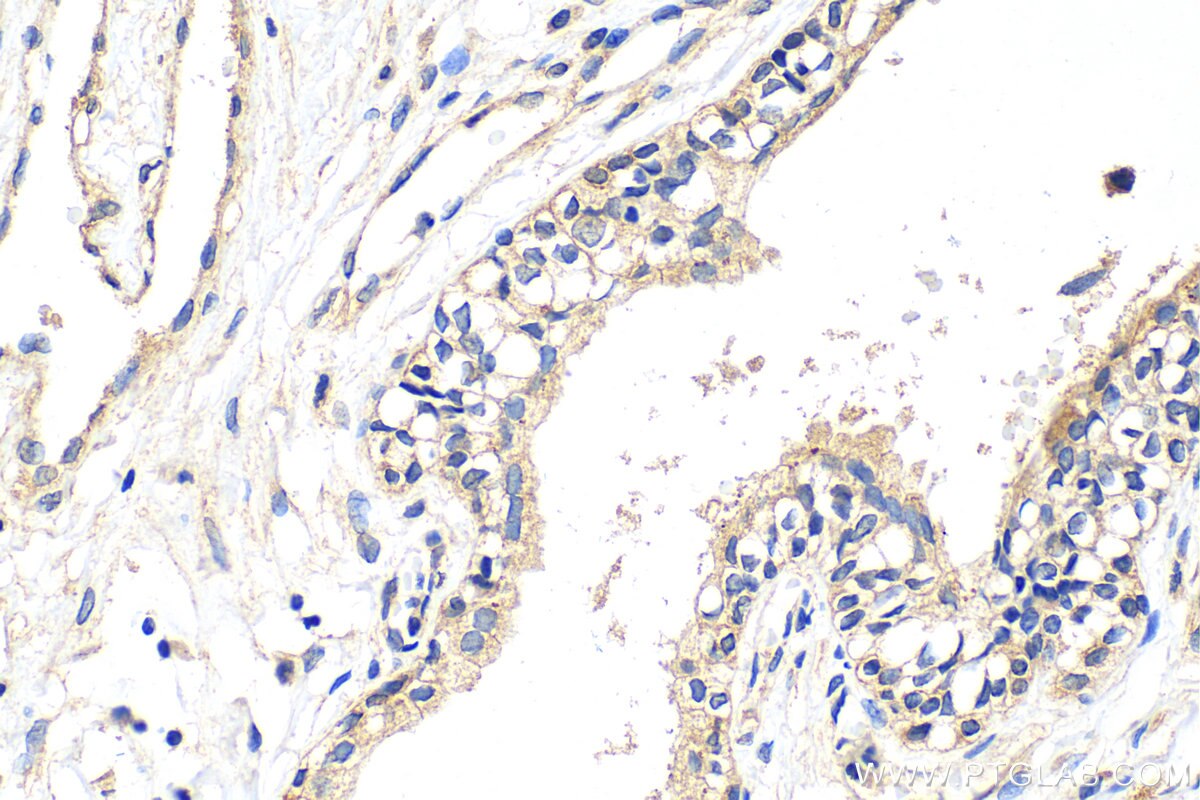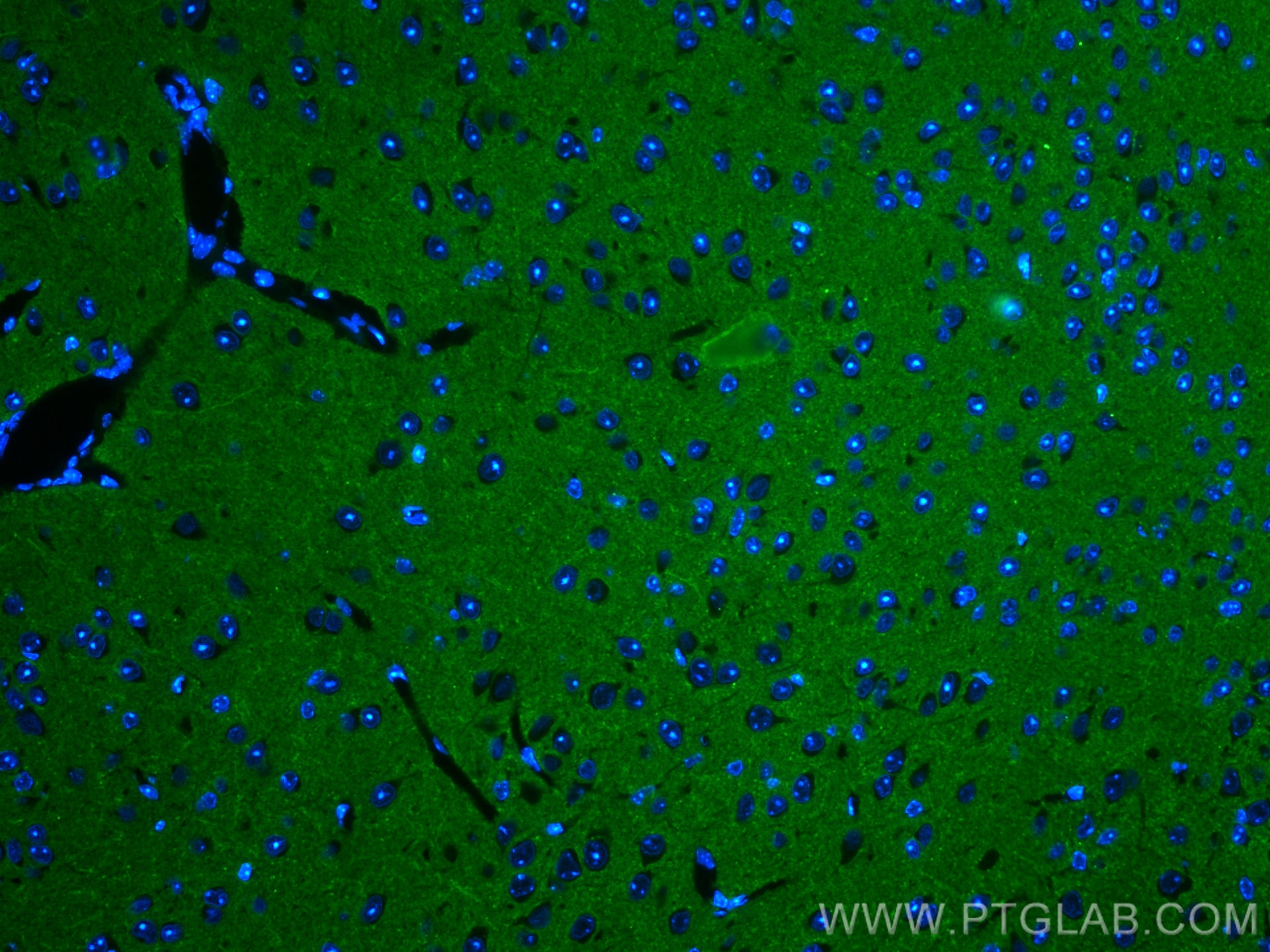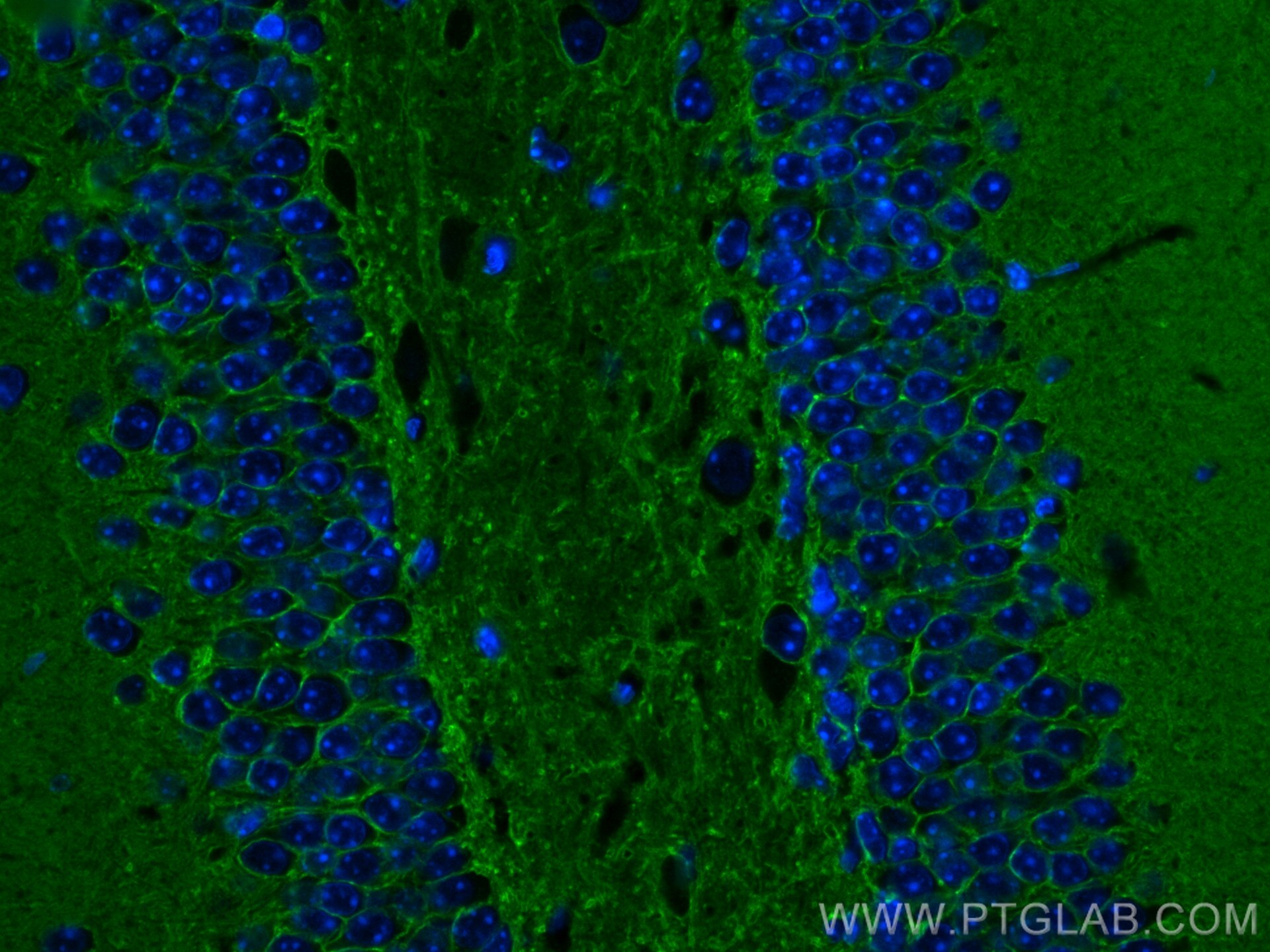ATP1A3 Polyklonaler Antikörper
ATP1A3 Polyklonal Antikörper für WB, IHC, IF-P, IP, ELISA
Wirt / Isotyp
Kaninchen / IgG
Getestete Reaktivität
human, Maus, Ratte
Anwendung
WB, IHC, IF-P, IP, ELISA
Konjugation
Unkonjugiert
Kat-Nr. : 25727-1-AP
Synonyme
Geprüfte Anwendungen
| Erfolgreiche Detektion in WB | Maushirngewebe |
| Erfolgreiche IP | Rattenhirngewebe |
| Erfolgreiche Detektion in IHC | humanes Prostatakarzinomgewebe Hinweis: Antigendemaskierung mit TE-Puffer pH 9,0 empfohlen. (*) Wahlweise kann die Antigendemaskierung auch mit Citratpuffer pH 6,0 erfolgen. |
| Erfolgreiche Detektion in IF-P | Maushirngewebe |
Empfohlene Verdünnung
| Anwendung | Verdünnung |
|---|---|
| Western Blot (WB) | WB : 1:2000-1:16000 |
| Immunpräzipitation (IP) | IP : 0.5-4.0 ug for 1.0-3.0 mg of total protein lysate |
| Immunhistochemie (IHC) | IHC : 1:50-1:500 |
| Immunfluoreszenz (IF)-P | IF-P : 1:50-1:500 |
| It is recommended that this reagent should be titrated in each testing system to obtain optimal results. | |
| Sample-dependent, check data in validation data gallery | |
Veröffentlichte Anwendungen
| WB | See 2 publications below |
| IF | See 1 publications below |
Produktinformation
25727-1-AP bindet in WB, IHC, IF-P, IP, ELISA ATP1A3 und zeigt Reaktivität mit human, Maus, Ratten
| Getestete Reaktivität | human, Maus, Ratte |
| In Publikationen genannte Reaktivität | Maus |
| Wirt / Isotyp | Kaninchen / IgG |
| Klonalität | Polyklonal |
| Typ | Antikörper |
| Immunogen | ATP1A3 fusion protein Ag22842 |
| Vollständiger Name | ATPase, Na+/K+ transporting, alpha 3 polypeptide |
| Berechnetes Molekulargewicht | 1013 aa, 112 kDa |
| Beobachtetes Molekulargewicht | 110-113 kDa |
| GenBank-Zugangsnummer | BC015566 |
| Gene symbol | ATP1A3 |
| Gene ID (NCBI) | 478 |
| Konjugation | Unkonjugiert |
| Form | Liquid |
| Reinigungsmethode | Antigen-Affinitätsreinigung |
| Lagerungspuffer | PBS with 0.02% sodium azide and 50% glycerol |
| Lagerungsbedingungen | Bei -20°C lagern. Nach dem Versand ein Jahr lang stabil Aliquotieren ist bei -20oC Lagerung nicht notwendig. 20ul Größen enthalten 0,1% BSA. |
Hintergrundinformationen
ATP1A3 participates in the catalyticing hydrolysis of ATP and the exchanging of sodium and potassium ions across plasma membrane. The catalyticing activity mode is ATP + H2O + Na+(In) + K+(Out) = ADP + phosphate + Na+(Out) + K+(In). It has been published that the neurologic disorders rapid-onset dystonia-parkionsonism (RDP), alternating hemiplegia of childhood (ACH) and CAPOS syndrome (cerebellar ataxia, areflexia, pes cavus, optic atrophy and sensorineural hearing loss) are all related with the mutation of ATP1A3. There are other reports suggest that early life epilepsy and episodic apnea revealing are potentially associated with the mutation of ATP1A3 as a result of impairment of Na/K homeostasis. This antibody is generated against the C-terminal region (665-1013aa) of ATP1A3 and detects the band around 100-113 kDa in SDS-PAGE.(PMID: 30097153, 20301294, 29922587)
Protokolle
| PRODUKTSPEZIFISCHE PROTOKOLLE | |
|---|---|
| WB protocol for ATP1A3 antibody 25727-1-AP | Protokoll herunterladen |
| IHC protocol for ATP1A3 antibody 25727-1-AP | Protokoll herunterladenl |
| IF protocol for ATP1A3 antibody 25727-1-AP | Protokoll herunterladen |
| IP protocol for ATP1A3 antibody 25727-1-AP | Protokoll herunterladen |
| STANDARD-PROTOKOLLE | |
|---|---|
| Klicken Sie hier, um unsere Standardprotokolle anzuzeigen |
Publikationen
| Species | Application | Title |
|---|---|---|
Commun Biol PEX3 promotes regenerative repair after myocardial injury in mice through facilitating plasma membrane localization of ITGB3 | ||
Dis Model Mech HBS1L deficiency causes retinal dystrophy in a child and a mouse model associated with defective development of photoreceptor cells |
